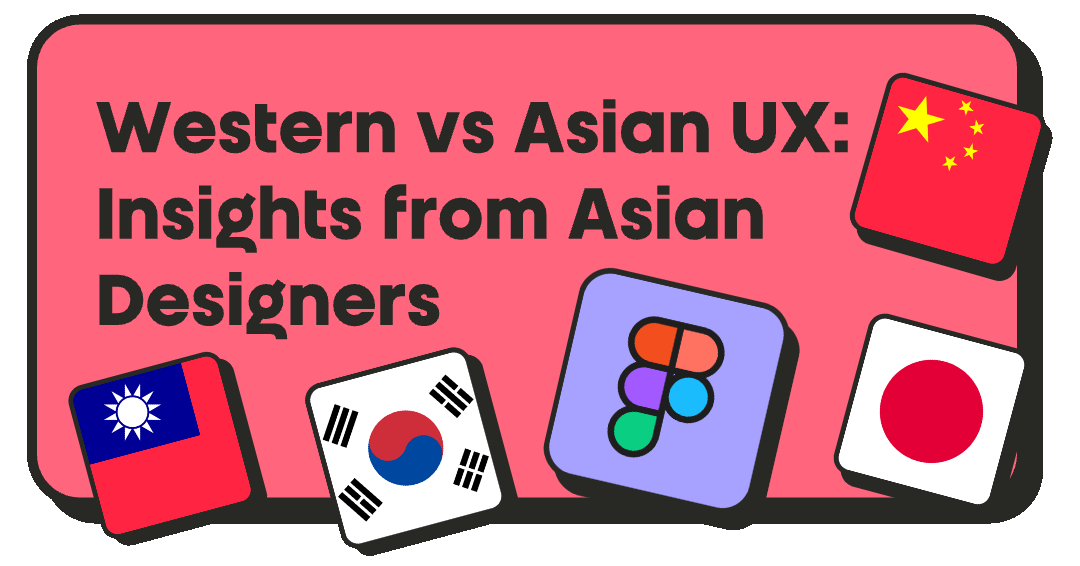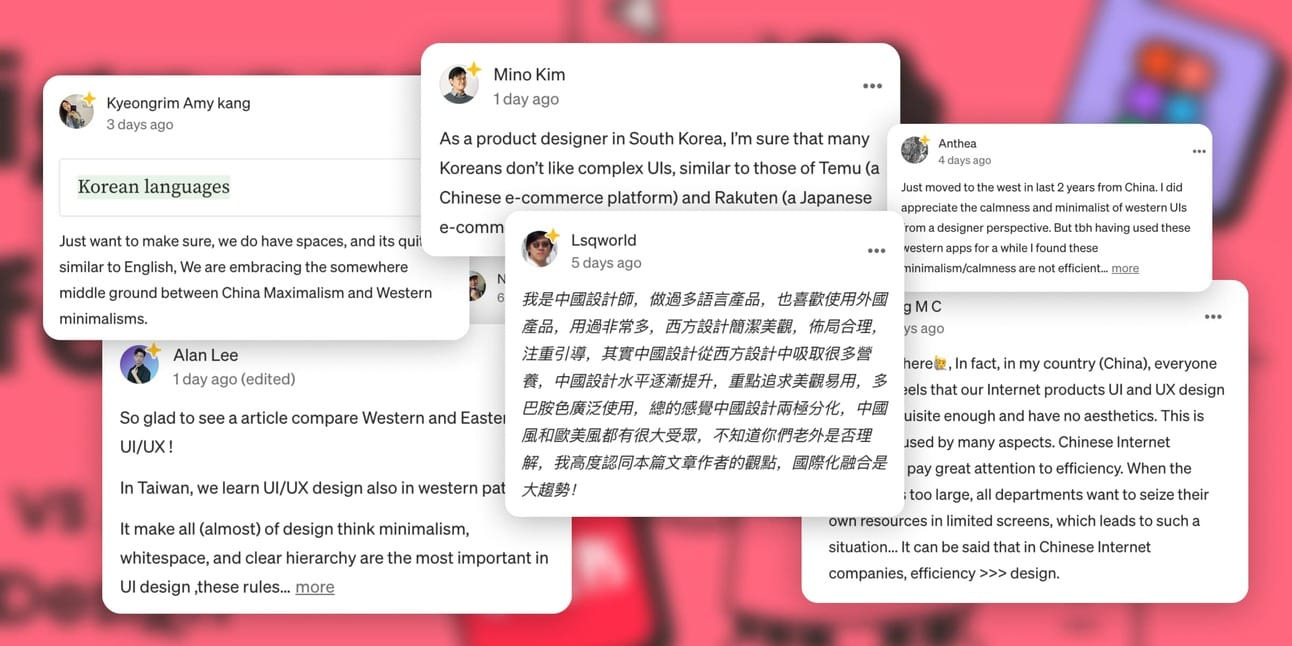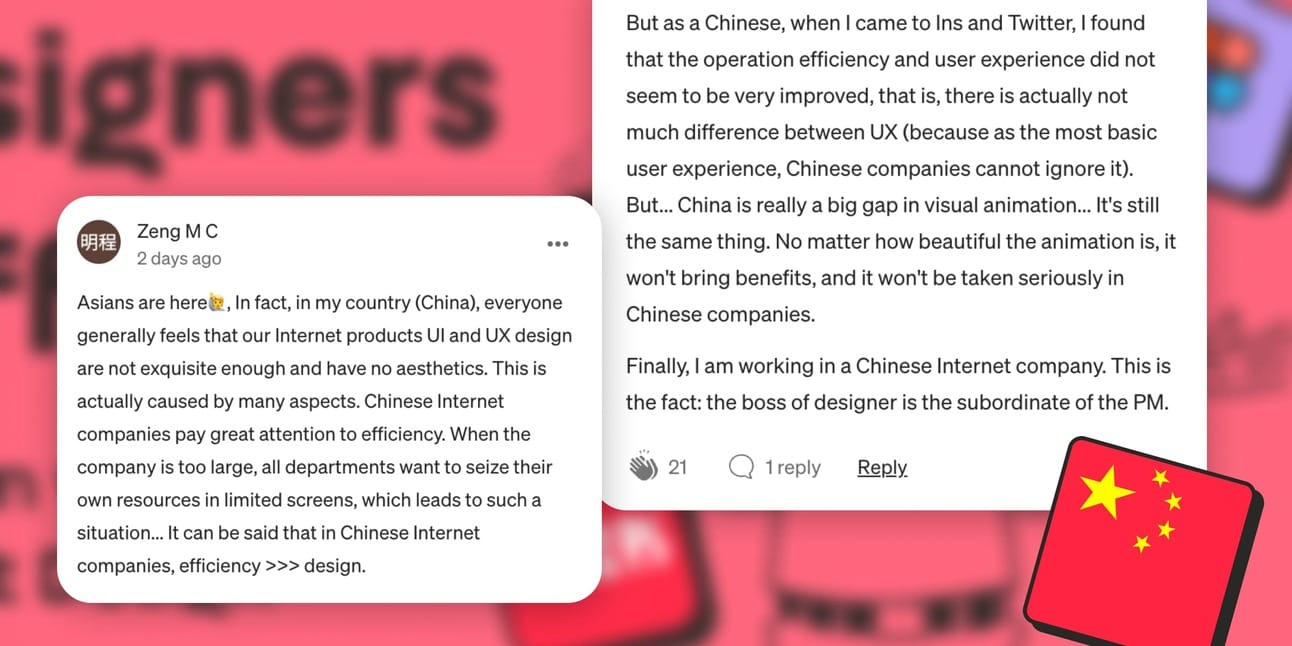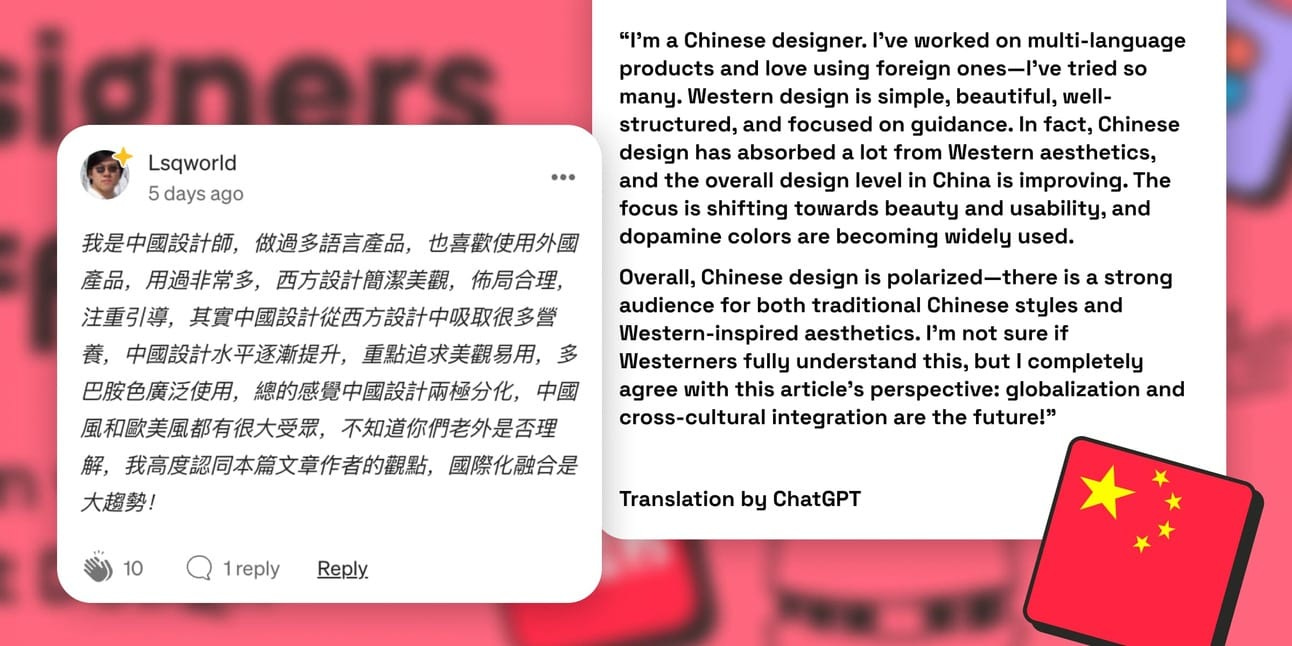The design playbook for Western vs. Asian UX
Why you might be wrong on design in Asia vs Western
Hey there! This is a 🔒 subscriber-only edition of ADPList’s newsletter 🔒 designed to make you a better designer and leader. Members get access to exceptional leaders' proven strategies, tactics, and wisdom. For more: Get free 1:1 advisory | Become an ADPList Ambassador | Become a sponsor | Submit a guest post
🔥 Don't Settle Conference 2025. A one-day virtual event on April 23, 2025, where top leaders share exactly how to launch a profitable side business *without* quitting your full-time job. Standard tickets are now at $69, first come, first serve only. 🎟️ Get your ticket today
Friends,
This edition takes you straight into the heart of Asia’s digital design world—and trust us, it’s not what you’d expect. After hearing directly from Chinese, Taiwanese, Korean, and Japanese designers, Kristina realized: the Western lens on UX barely scratches the surface.
We often throw around terms like “minimalism” or “information overload” without understanding what drives those choices in different regions. And here’s the kicker—many Asian designers are just as critical of their own UX norms as we are.
So what happens when tradition meets innovation? When local culture collides with global trends? And most importantly—what does all this mean for designing products people actually want to use?
Here’s what we’ll explore in this edition:
🌏 Western vs. Asian UX: What’s shaping today’s interfaces?
🇨🇳 Why Chinese designers are craving more minimalism
🇹🇼 How Taiwanese designers are rethinking the limits of simplicity
🇯🇵 The print-inspired, maximalist magic of Japanese websites
🇰🇷 How Korea balances super apps with Scandinavian minimalism
UX isn't universal—but that’s exactly what makes it exciting.
Let’s dive in 👇🏻
Kristina Volchek is a former CMO turned self-taught designer. After transitioning into freelancing in 2019, she spent three years designing and building Webflow websites and Shopify stores, helping small businesses thrive. In 2021, she joined Sweatcoin as a Senior Product Designer on the Growth Team, where her designs contributed to acquiring over 66M new users in just one year. Since 2022, Kristina has been teaching UI and Product Design at Dribbble, mentoring at Liftyz, and, in 2024, she returned to freelancing to empower content creators and solopreneurs while teaching at Growth Design School.
You can connect with her on (LinkedIn) & (Instagram)
🌏 UX in Asia: What Surprised Me the Most
After hearing directly from Chinese, Taiwanese, and Korean designers, I realized there’s a lot more to the story. Here are some of the biggest takeaways:
🇨🇳 Chinese designers actually want more Western minimalism.
🇹🇼 Taiwanese designers are questioning if they’ve gone too far with minimalism.
🇯🇵 Japanese web design is still strongly influenced by print design, with vibrant magazine-style layouts.
🇰🇷 Korean users seamlessly navigate both Chinese super-apps and ultra-minimal interfaces.
But let’s break it down further — how did these UX trends develop in each country? 👇
🇨🇳 China: When Efficiency > Aesthetics
Chinese apps aren't packed for no reason - they're designed for speed, multitasking, and chasing these sweet business KPIs.
But here’s the twist: Many Chinese designers don’t like it.
Several shared that they hope Western design trends—especially cleaner UI and better accessibility—will shape the future of Chinese products.
This reflects a growing shift in Chinese UI design:
UI styles are splitting — Some brands lean into a traditional Chinese aesthetic, while others adopt a sleek Western-inspired look.
Super-app dominance — Platforms like WeChat and Alipay have trained users to expect all-in-one functionality, making it hard to strip things down overnight.
Static UIs — Motion design is gaining interest among designers, but many companies still don’t take it seriously, prioritizing KPIs over animation.






